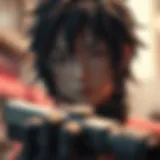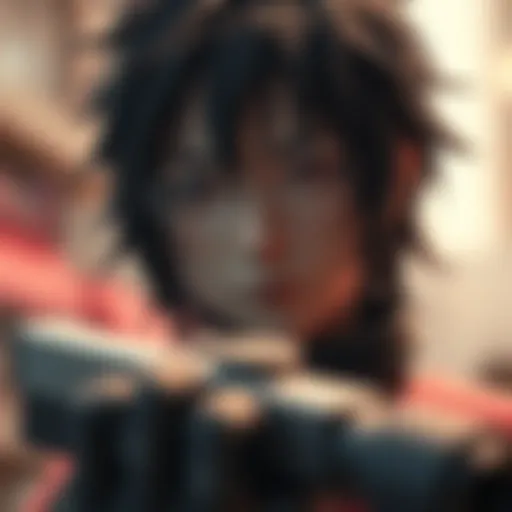Exploring the Isekai Genre in Anime and its Applications
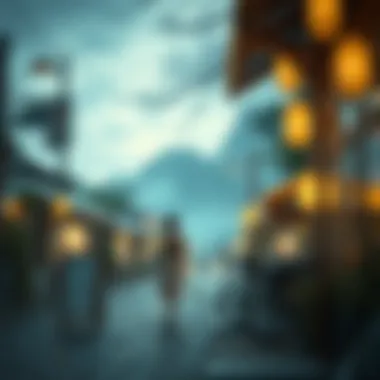

Intro
The isekai genre in anime has stirred quite the commotion amid fans and casual viewers alike. Consider the thrill of being whisked away from the mundane to a fantastical world. It's a concept that resonates deeply with audiences, beckoning them to explore realms where they can be heroes, villains, or perhaps something in between.
But it’s not all about escapism; the genre carries a depth that merits exploration. Isekai has evolved over the years, intertwining with technology and cultural narratives that not only reflect contemporary issues but also enhance viewer engagement through innovative applications. Fans find themselves not just consuming content but actively participating through various anime-related infrastructure, from merchandise to mobile applications.
In the sections that follow, we will uncover the intricate layers of this thriving genre, examine its roots, themes, and the technological apparatus that supports its popularity. Whether you're an anime aficionado or a tech enthusiast, you're bound to find something of note here. Let’s embark on this journey into the world of isekai, where the ordinary meets the extraordinary.
Understanding Isekai
When diving into the world of anime, one genre rises like cream to the top: isekai. The term itself translates to "another world" in Japanese, and it evokes a sense of wonder, adventure, and the thrill of the unknown. Understanding isekai is crucial for both anime enthusiasts and newcomers alike, as it forms the backbone of many popular series and narratives. This genre doesn't merely entertain; it also explores profound themes intrinsic to the human experience and our relationship with technology.
Exploring the isekai genre reveals various characteristics that differentiate it from other styles of storytelling. Isekai shows often blend elements of fantasy, adventure, and sometimes even comedy. A common thread throughout these series is the protagonist's transition from an ordinary, often mundane environment, to a vibrant and fantastical world. Here, they frequently encounter magical creatures, forge alliances with diverse characters, and face challenges that put their true selves to the test.
Some essential aspects that make understanding isekai worthwhile include:
- Character Development: Protagonists go through significant transformation, often discovering hidden strengths or truths about themselves.
- World-Building: Each unique world in isekai adds depth to the narrative, showcasing creativity and cultural inspirations.
- Themes of Identity: Many stories delve into the protagonist's quest for identity and the nature of reality itself, prompting viewers to reflect on their own lives.
With this understanding, viewers can appreciate not just the engaging storylines but also the cultural and technological implications that isekai narratives encompass.
Definition and Characteristics
At its core, isekai is a genre built around the premise of characters being transported to another world. This may occur through various means—be it magic, technology, or even a sudden accident. What ties these stories together is the exploration of how individuals adapt to drastically different systems of norms and values, often leading to riveting conflicts and growth.
Some defining characteristics are:
- Transport Mechanism: The protagonist's change in environment is a key plot device, whether it’s by summoning spells or fantasy portals.
- New Rules and Magic Systems: The new world usually has its own sets of rules, including unique challenges and abilities.
- Character Roles: It’s common for main characters to take on roles such as heroes, leaders, or even anti-heroes, each influencing the story's direction.
With the rise in popularity of series like Re:Zero - Starting Life in Another World or Sword Art Online, it's essential to note that not all isekai narratives strictly follow typical archetypes. Some bring fresh takes while still anchoring themselves within traditional boundaries of the genre.
Historical Context
Isekai's roots can be traced back to earlier narratives in Japanese literature, like Urashima Taro or even Alice in Wonderland. These tales featured characters who ventured into realms that were both wondrous and perilous, serving as a springboard for modern interpretations.
Over time, numerous cultural shifts have influenced the evolution of the isekai genre. The post-2000s era saw a surge in online gaming and web novels that captured the imaginations of the youth. Readers became enchanted with tales that combined their love for gaming with immersive storytelling. The first major isekai anime to hit the mainstream was No Game No Life, which drew attention for its unique integration of gaming elements into fantasy lore.
As technology has advanced, the genre has adapted to include immersive 3D animation and interactive storytelling seen in accessible platforms like Crunchyroll and Funimation. This adaptability reflects broader societal trends, such as escapism, particularly relevant in today's fast-paced world, providing a sanctuary for many.
"Anime is not just entertainment. It reflects our aspirations and fears, exploring worlds that mirror our realities or offer escape."
In sum, understanding isekai reveals a tapestry of themes and cultural commentary that resonate with viewers, making it a crucial topic for any true anime fan.
Cultural Influences on Isekai
The isekai genre, with its recurrent themes of parallel worlds and character reincarnation, is not created in a vacuum. Cultural influences play a pivotal role in shaping its narratives and character archetypes. From ancient Japanese folklore to contemporary literature, these influences breathe life into isekai, reflecting the aspirations and dilemmas of modern society. Understanding these cultural dimensions is crucial, not just for appreciating storytelling but also for grasping the deeper meanings embedded in these fantastical adventures.
Japanese Folklore and Mythology
Japanese folklore and mythology are treasure troves of stories that inform the isekai genre. Elements such as kami (spirits) and yōkai (supernatural beings) often find their way into the isekai narrative. One stunning example comes from the tale of Urashima Tarō, a legendary fisherman who saves a turtle and is rewarded with a visit to the Dragon Palace under the sea. Upon returning, he discovers that time has passed differently, highlighting themes of otherworldly experiences and the consequences of interacting with supernatural entities. This interplay between the mundane and the mystical serves as a significant backdrop for the overarching themes present in isekai tales.
The notion of traveling to alternate realms can also be traced back to various classic Japanese mythological texts, like the Nihon Shoki. Here, the gods traverse both physical and spiritual realms, which can be found mirrored in many modern anime series. By reimagining these ancient tales, creators give viewers a sense of continuity between history and contemporary storytelling, blending the past with the present.
"In the heart of every isekai tale, there lies the pulse of folklore, intertwining tradition with the boundless potential of imagination."
Modern Literary Inspirations
Shifting from ancient tales to modern literature, isekai draws from diverse literary sources that resonate with today's audiences. Writers like Lewis Carroll and his whimsical Alice's Adventures in Wonderland introduced concepts of bizarre worlds and surreal characters that have paved the way for isekai’s narrative style. These works often serve as catalysts for journeys of self-discovery and exploration in foreign lands.
Another notable influence comes from works like The Chronicles of Narnia by C.S. Lewis, where young characters are thrust into parallel worlds filled with enchanting rules and moral dilemmas. Such inspirations challenge protagonists, prompting them to confront personal fears and identity while navigating realms distinct from their own.
Contemporary isekai also leans heavily on elements of gaming and virtual reality, resonating with the rise of technology in storytelling. Titles like Sword Art Online blur the lines of reality with immersive experiences, emphasizing the disconnect often felt in modern society as individuals encounter both adventure and isolation. This blend of traditional literary tropes with current trends creates a rich tapestry that resonates with anime fans and tech enthusiasts alike.
Popular Isekai Titles
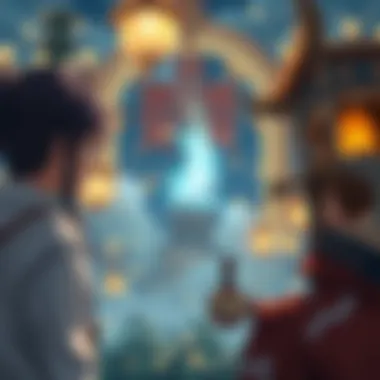

The isekai genre boasts a rich tapestry of narratives that resonate deeply with viewers. By exploring the popular titles in isekai, one gains a clearer understanding of its significance, evolution, and cultural relevance. These works not only entertain but also serve as mirrors reflecting societal values and personal aspirations. Popular Isekai titles often offer intricate worlds that allow for escapism and adventure, which many viewers find appealing amid their daily routines.
Classics of the Genre
Classics in the isekai genre laid the groundwork for what we see today. Sword Art Online is a seminal work, blending virtual reality gaming with life-or-death stakes—an idea that felt groundbreaking when it aired in 2012. The show taps into the anxieties of the digital age, illustrating how technology both connects and isolates. Then there's Re:Zero - Starting Life in Another World, which changed the game by introducing the concept of time loops and emotional depth that made the protagonist’s struggles relatable.
These classics help establish norms within the genre, shaping audience expectations. They push boundaries on what isekai can represent, showcasing transformation and resilience. For instance:
- Sword Art Online highlights the impact of video games on society and individual identity.
- Re:Zero dives into darker themes like despair and redemption, offering a more nuanced take.
Thus, classics not only provide entertainment but also critical reflections on modern life.
Contemporary Hits
More recent isekai titles continue to attract huge audiences while experimenting with narrative styles and themes. The Rising of the Shield Hero has become a fan favorite, challenging conventional hero archetypes. The story centers around themes of betrayal and growth, showcasing the protagonist’s journey from victim to powerful hero, thus resonating with those who have faced adversities in their own lives.
Titles like That Time I Got Reincarnated as a Slime bring humor into the mix while incorporating intricate world-building, allowing viewers to escape into imaginative spaces. Similarly, Jobless Reincarnation has struck a chord by addressing second chances and personal development after life's setbacks.
Some significant points in contemporary hits include:
- Unique character arcs that diverge from traditional tropes.
- Complex world-building that enhances viewer immersion.
- A blend of humor and serious storytelling that broadens audience appeal.
Emerging Series
Newcomers to the genre continue to pop up, proving that isekai still has plenty of life left in it. Shows like Mushoku Tensei: Jobless Reincarnation are emerging with stories that explore themes of personal growth and the potential for change. These newer titles often embrace fresh perspectives, showcasing diversity in characters and settings, which broadens the genre’s overall appeal.
For example, Cautious Hero: The Hero Is Overpowered but Overly Cautious employs satire to critique the very mechanics of isekai narratives. This clever twist appeals to those who appreciate meta-commentary and subversion of tropes. Emerging series encapsulate:
- A greater focus on character development over plot mechanics.
- Innovative takes on traditional isekai elements, keeping the genre fresh.
- Opportunities to explore social issues in a fantastical context.
Overall, the exploration of these facets of isekai shows that the genre is more than just escapism; it’s a vessel for commentary on a range of issues and a mechanism for artistic expression.
“The beauty of the isekai genre lies in its flexibility, adapting and evolving over time while reflecting the aspirations and fears of its audience.”
By engaging with popular titles across these various eras, one can appreciate not just the individual stories but the collective narrative of an entire genre that continues to reshape its identity.
Common Themes in Isekai
The isekai genre thrives on themes that resonate deeply with audiences, showcasing narratives that pull at the heartstrings or stimulate intellectual curiosity. These common threads not only engage viewers but also enhance the viewing experience, providing layers of meaning and interpretation. Understanding these themes allows enthusiasts to unravel the complexities of the stories and characters, enriching their overall anime journey.
Escape and Adventure
At the core of many isekai tales lies the theme of escape. Characters often find themselves in dire need of a break from their mundane realities. This escapism serves as a gateway to thrilling adventures in fantastical worlds filled with magic, mythical creatures, and life-altering quests. Not merely an escape from the ordinary, these journeys often reflect deeper personal struggles. For example, Re:Zero − Starting Life in Another World provides a glimpse into how the protagonist, Subaru, grapples with trauma and hopelessness, utilizing his otherworldly experiences to confront his fears and desires.
- Often, these adventures are not just about physical journeys but also metaphorical ones, challenging characters to confront their own limitations.
- The immersive nature of these worlds captivates viewers, transforming their perception of freedom and responsibility.
As audiences traverse these vibrant landscapes, they experience not just the thrill of adventure but also a sense of wonder and discovery.
Self-Discovery
Self-discovery is a recurring motif in isekai narratives, portraying characters who often embark on their journeys without a clear sail. Faced with unfamiliar challenges, they are forced to explore their identity, moral compass, and latent strengths. A striking example is shown in No Game No Life, where siblings Sora and Shiro, while navigating a world governed by games, gradually uncover their potential and individual motivations amidst various trials. This theme resonates with viewers who may find themselves on a similar quest for understanding in their own lives.
- The use of ambiguous character arcs enriches the experience, as audiences witness transformations driven by choices and growth.
- Characters must confront their flaws, aspirations, and even the consequences of their decisions, creating a complex interplay of personal growth.
This self-exploratory aspect invites viewers to reflect on their own journeys, often leading to discussions about purpose and existentialism within the context of anime.
Power Dynamics and Conflict
Power dynamics and conflict are indispensable drivers of tension within the isekai realm. The shifts in power structures often reflect societal hierarchies and personal struggles, effectively mirroring real-life issues. In Sword Art Online, the protagonist Kirito encapsulates this theme as he navigates a dangerous virtual reality where life and death hang in the balance. The interplay of strength, strategy, and morality raises questions about what it means to wield power responsibly.
- Conflicts often arise from various sources, be it interpersonal clashes or larger political struggles within the fantastical realms.
- The exploration of authority, loyalty, and betrayal examines human nature and makes for compelling storytelling.
Understanding these dynamics is crucial for viewers, as it reveals not only the dark side of power but also the resilience of the human spirit in overcoming adversity.
"Isekai themes ripple through human emotions, bridging the gap between escapism and introspection."
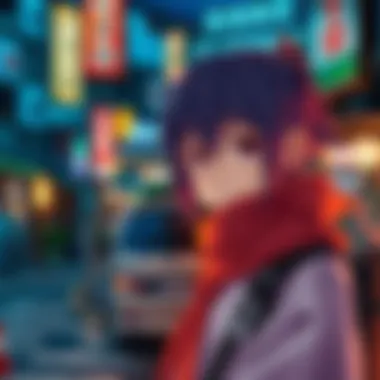

The Role of Technology in Isekai
The advent of technology has dramatically altered various aspects of modern life, and anime is no exception. In the realm of isekai, where characters often traverse to new worlds, technology plays an integral role in shaping the narrative and enhancing the viewer's experience. This section will explore how technology interweaves through isekai storytelling, focusing on its influence on animation techniques and sound design and music, ultimately enhancing the viewing experience and facilitating deeper audience engagement.
Animation Techniques
Animation is the heartbeat of anime, and in isekai series, the visuals are particularly crucial. The way these new worlds are depicted can whisk viewers away on an adventure of imagination. For instance, studios like MAPPA and Ufotable have utilized cutting-edge software and animation techniques to create vibrant landscapes and elegantly detailed character designs. Techniques such as CGI integration and 2D hand-drawn techniques help merge reality with fantasy.
The use of 3D rendering allows for dynamic camera angles and immersive experiences that wouldn't be possible with traditional animation alone. Series like "Re:Zero - Starting Life in Another World" make adept use of these tools, setting the stage for emotional moments that resonate long after the credits roll.
The technical aspect also includes the implementation of frame rate optimization, allowing fluid motion during intense action sequences. Viewers often prefer shows that offer crisp images, making the animation's role pivotal—not just for aesthetic appeal but also for storytelling effectiveness. As advances continue to push the boundaries of what's possible, fans can expect even more visually stunning representations of isekai narratives in the future.
Sound Design and Music
The auditory experience in isekai anime is another area where technology shines. Sound design, which encompasses everything from background sounds to character dialogues, is crucial for crafting the atmosphere of these alternative worlds. Modern sound editing software enables creators to manipulate sounds in ways that contribute to the setting's believability.
For instance, the use of spatial audio can immerse viewers in the audio landscape, making it feel as though they are right alongside the characters. Think of the lush forests filled with mythical beasts or bustling towns alive with the chatter of locals—these experiences are elevated through masterful sound design that captures the essence of the isekai world.
Additionally, the musical scores in isekai often play a significant role in setting the emotional tone. Composers like Yuki Kajiura and Hiroyuki Sawano leverage technology for intricate sound layering, blending orchestral pieces with electronic elements, crafting scores that leave a lasting impression on audiences. The music underscores moments of triumph, despair, and adventure, resonating deeply with the viewers.
"The right music and sound design in an anime can elevate the narrative, bringing the story to life in ways visuals alone cannot."
As isekai continues to evolve, advancements in technology will likely pave the way for even richer auditory experiences, ensuring that fans are not just watching a story unfold but truly living it with every sensory element engaged.
In summary, technology's role in isekai animation and sound design significantly enhances storytelling, allowing for more immersive experiences. The intricate dance between visual and auditory elements is what draws viewers into these fantastical realms, fostering a connection that encourages ongoing engagement with the genre.
Viewer Engagement Through Apps
The isekai genre has not only transformed the landscape of anime storytelling but also redefined how viewers engage with their favorite shows. In today's digital age, anime streaming platforms and interactive apps have carved a unique niche, facilitating deeper connections between the audience and the content. Streamlining viewer engagement through technology holds significance not just for fans but for the anime creators and distributors as well.
One significant element of viewer engagement is the accessibility these platforms offer. Anime streaming applications like Crunchyroll and Funimation have become household names. They provide an expansive library of titles, keeping viewers hooked with the promise of uninterrupted access to episodes. This easy access condenses what might have traditionally been an arduous process of tracking down specific series into a few clicks. Viewers can watch a plethora of shows, all within the comfort of their own devices, which amplifies the overall experience.
Moreover, these applications often feature tailored recommendations based on viewer preferences, thus enhancing user satisfaction. With the rise of
"binge-watching," audiences can consume entire seasons in one sitting, fostering a community of discussions and theories around plots and characters.
Another aspect worth noting is the social interaction that modern apps encourage. Beyond simply watching shows, many streaming platforms now offer social tools that enable viewers to comment, share insights, and participate in discussions. These interactions not only build excitement but also facilitate a shared experience akin to watching together with friends.
Anime Streaming Applications
Streamlining and centralizing content, anime streaming applications have become the backbone of the industry's growth. Services like Netflix and Hulu, alongside specialized platforms, permit users to dive into collections spanning decades.
- Accessibility and Convenience: Users can watch their selection anytime, anywhere, eliminating the need to follow schedules and airtimes.
- Variety of Options: With genres catered to all tastes, viewers can explore series beyond their usual preferences, leading to diverse viewing habits.
- Quality of Experience: With features such as HD streaming and subtitle options, these services greatly enhance visual and audio experiences.
In addition to access, many streaming services now integrate social features that promote viewer interactions—such as watching together in or creating forums where fans can gather and exchange theories, deepening their ties to the genre and each other.
Fan Interaction Platforms
Fan interaction platforms have carved out a space for enrichment beyond mere viewership. Websites and applications like Reddit and Discord foster dialogue and community among fans, paving the way for a multi-layered experience within the isekai genre.
- Discussion Forums: Platforms allow fans to bandy about theories, critique art styles, and appreciate storytelling. They provide a venue where audiences can engage deeply with their feelings around a particular series or character.
- Creative Expression: Through fan art, fan fiction, or cosplay, individuals share interpretations that can enhance the understanding and enjoyment of the content.
- Real-Time Interaction: Apps that offer live chats or streams create dynamic opportunities for spontaneity. Fans can ask questions during Q&A sessions or even partake in live watch parties, building a sense of inclusivity and community.
Ultimately, these features contribute to an enriched viewing experience. Whether it's via a streaming service or a fan interaction website, the tools at hand deepen connections to the isekai universe and facilitate a cultural exchange that fuels ongoing discussions.
The evolution of viewer engagement through apps signals a robust transformation in how anime is consumed, marking the collective journey from passive watching to active participation.
Isekai in Mobile Gaming
The realm of mobile gaming has emerged as a significant frontier within the broader landscape of the isekai genre. This distinct intersection not only enriches the gaming experience but also reflects how the elements of isekai can be adapted for engagement through interactive platforms. With mobile devices becoming ubiquitous, the appeal of taking narratives from anime and transplanting them into gaming formats is more pronounced than ever, drawing both avid gamers and anime fans into immersive worlds.
Popular Isekai Games
There are several standout titles in the mobile gaming scene that exemplify the essence of the isekai genre. Here are a few popular ones:
- Re:Zero - Starting Life in Another World: Death or Kiss: This game allows players to dive into the universe of Re:Zero, where time loops and complex character relationships drive gameplay mechanics. Choices affect outcomes, mirroring the anime’s storytelling style.
- Sword Art Online Mobile: Based on the famous anime, this mobile adaptation captures the thrill of virtual reality and the challenges of living in a game world. Fans can experience adventures alongside beloved characters and partake in various battles.
- Log Horizon: Lost Game: Here, players navigate a digital fantasy world, highlighting strategy and team dynamics akin to the original anime's plot. This game emphasizes community and cooperation, famed themes within the isekai framework.


These games make use of characters and plots established in anime, bringing the fantasy to life in ways that deepen engagement for fans.
Game Mechanics Reflecting Isekai Themes
When it comes to game mechanics in mobile isekai games, several aspects stand out:
- Character Progression: Players often start as ordinary characters who evolve into powerful figures, paralleling the typical isekai trope of growth and self-discovery.
- Quests and Exploration: Quests frequently unfold like episodes of an anime, where players explore expansive worlds to uncover stories, much like heroes do in their journeys. This sense of adventure is critical in drawing players into the isekai experience.
- Interactive Choices: Games allow for decision-making, where choices made alter narratives. This mechanic mirrors the complicated scenarios often faced by characters in isekai stories, where each decision can have monumental consequences.
- Community Engagement: Many games foster online interactions, reminiscent of the social dynamics seen in isekai series. Players often form alliances, trade, and strategize together, thus creating a communal atmosphere reflective of the genres’ themes.
"The immersive play and interactivity in mobile gaming hold a mirror to isekai narratives, emphasizing growth, choice, and community."
In summary, the applications of isekai in mobile gaming cultivate a rich tapestry of experiences for players. They encapsulate the charm of the genre while leveraging modern technology to foster deeper engagement. As fans continue to explore these narratives, the synergy between anime and gaming becomes ever more pronounced, leading to a promising future for the isekai genre in mobile platforms.
Client Applications to Enhance Viewing
In the fast-evolving landscape of anime, the viewer's experience has dramatically changed. With the rise of various technologies, client applications have become an integral part of how fans consume and engage with their favorite shows, especially within the isekai genre. This section will delve into the elements that make these applications vital, including their benefits and the considerations to keep in mind when using them.
Optimum Hardware and Software
To truly enjoy the rich visual and auditory experience offered by isekai anime, the right hardware and software are key. Choosing an optimal setup involves several factors:
- Processing Power: A better CPU can handle higher frame rates and smoother graphics. Popular choices include AMD Ryzen and Intel i7 or i9 processors.
- Graphical Capabilities: Graphics cards like NVIDIA GeForce RTX or AMD Radeon RX are recommended for high-quality visuals. Anime often has vibrant colors and intricate details that need strong GPU support.
- Memory: At least 16GB of RAM helps to ensure that your system runs applications without any hiccups, especially when multitasking.
- Display Quality: A 4K monitor can greatly enhance your viewing experience. Consider OLED or IPS panels for better color accuracy and contrast.
By investing in optimal hardware, viewers can unlock the full potential of the art and storytelling that the isekai genre offers.
Customization Options
Customizing your viewing experience not only makes anime consumption more enjoyable but also helps tailor it to individual preferences. Many streaming applications provide various options that can enhance viewing:
- Subtitles and Dubbing: Viewers can choose between subtitles in various languages or different language dubbing. A well-synchronized dub can help immerse audiences in the story, while subtitles can keep them connected to the original dialogue.
- Audio Settings: Some applications allow sound adjustments, including effects to enhance surround sound or even adjusting the soundtrack volumes against dialogues.
- Visual Filters: Options to apply visual filters can change the aesthetics of the anime, adapting it to better suit user preferences— for instance, switching to darker themes can reduce eye strain during late-night viewings.
"The beauty of client applications lies in their ability to adapt to individual viewer preferences, allowing fans to experience isekai in ways uniquely tailored to them."
Critical Reception of Isekai
The critical reception of isekai provides insightful perspectives that help unravel the genre's evolution and its notable impact on popular culture. This chapter dives into why critics and audiences alike are intrigued by the rising tide of isekai stories and the implications of their narratives. Examining how different elements resonate with viewers solidifies the genre's role in both entertainment and cultural commentary.
Numerous aspects come into play when analyzing isekai's reception. For instance, the genre’s traits often generate heated debates around originality and the thematic recycling that has become somewhat of a hallmark. Aspects like storytelling mechanisms, character development, and pacing draw both praise and critique.
Critiques and Challenges
One of the flags often waved by critics involves the over-reliance on certain tropes. Many isekai narratives tend to follow familiar patterns, such as a protagonist being suddenly transported into a new world, gaining extraordinary powers, or circumventing traditional character arches that would typically emphasize growth or realism.
The stereotypical ‘chosen one’ narrative often surfaces in critiques. Many detractors argue this limits storytelling potential, rendering plots predictable and uninspired. The concern here is twofold: not only are these stories becoming stale, but they risk reducing the narrative arcs of complex characters to mere mechanisms for plot development.
However, it’s also crucial to recognize that some creators intentionally lean into these tropes as a means of subversion. For example, works like "Re:Zero – Starting Life in Another World" showcase the darker sides of these themes, addressing failure, mortality, and psychological strain, challenging what many come to expect from isekai fare.
Celebrated Interpretations
Conversely, numerous isekai titles have been celebrated for their innovative storytelling and depth. Works like "The Rising of the Shield Hero" and "Sword Art Online" have garnered acclaim for their unique approaches. These stories not only captivate audiences but also provoke discussions on themes like justice, morality, and the digital divide.
Viewers appreciate complexity in characters, where relationships are formed in shades of gray rather than a clear-cut dichotomy of heroes and villains. Critics have praised how these stories represent personal struggles, societal issues, and even the nature of reality itself.
"The beauty of isekai lies in its dual nature: while it offers escapism, it also serves as a mirror, reflecting our own societal dilemmas and personal quests for identity."
Moreover, the exploration of various cultural contexts has added richness to the genre. For instance, elements derived from folklore and myths are elegantly woven into narratives, making them not just tales of adventure, but meaningful explorations of cultural identity and heritage. The incorporation of diverse backgrounds presents a fresh viewpoint, enriching the genre as a whole.
In summary, the critical reception of isekai showcases a dichotomy of views, spanning from critiques of repetitive tropes to celebration of innovative storytelling. Understanding these perspectives offers fans a more nuanced appreciation of the genre and its ongoing evolution in both the anime and gaming world.
Future of Isekai
The future of the isekai genre holds a lot of promise, and understanding its trajectory can provide insight not just into anime, but into cultural reflections and societal sentiments. As technology advances and viewer preferences evolve, the themes and narratives of isekai are likely to adapt accordingly. This section focuses on key elements in the upcoming landscape of isekai, pinpointing trends and innovations that could redefine the genre.
Trends to Watch
One noteworthy trend in the world of isekai is the growing incorporation of augmented and virtual reality experiences. As tech-savvy viewers continue to seek immersive storytelling, creators may need to press beyond traditional boundaries. Imagine an anime series where viewers can don VR headsets, stepping into the shoes of the protagonist and experiencing their adventures firsthand. This blend of gaming and viewing could create an engaging platform that redefines the narrative experience.
Another trend involves the integration of diverse cultural backgrounds into isekai stories, moving beyond the typical magical worlds rooted in Japanese folklore. This shift towards global narratives allows a richer tapestry of experiences to emerge, drawing inspiration from various mythologies and belief systems. This fusion can broaden appeal and introduce audiences to new perspectives, thus enhancing the genre's depth.
The rise of serialized storytelling is also crucial; instead of traditional episodic formats, anime might lean toward longer story arcs split over several seasons. This allows for more character development and intricate plots, giving animators the chance to explore themes like existentialism and morality in greater detail.
"It’s often in the blending of cultures that we find the most compelling stories waiting to be told."
Potential for Innovation
Innovation is the lifeblood of any genre, and isekai is not an exception. One area ripe for innovation is character development. Moving forward, we might see characters who are not just thrown into new worlds, but who also grapple with complex feelings and transformations that reflect real-life challenges. Imagine protagonists whose struggles mirror the anxiety of modern living or the search for meaning in a fast-paced society.
Furthermore, advancements in animation technology could elevate the visual experience to new heights. The potential for hyper-realistic graphics and fluid movements will not only enhance storytelling but also entice a broader audience. This might involve collaborations with tech industries to create groundbreaking visual techniques for immersive experiences.
Then there's the promise of personalized viewing. With machine learning and algorithmic predictions, viewers might soon have the opportunity to tailor their viewing experiences based on their preferences. These could include adjustable narrative threads or character arcs that play out differently depending on audience choices.
These potential innovations show that the landscape of isekai may evolve toward an experience that mirrors the complexities of real life, combining technological advancements with deep, meaningful storytelling.










